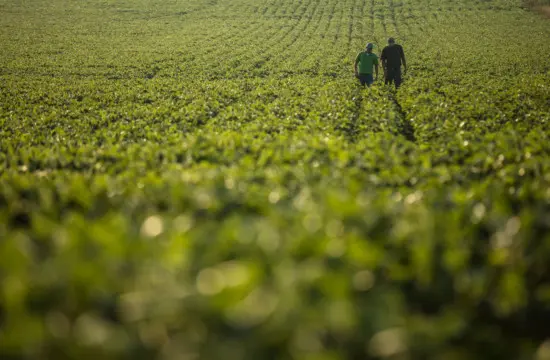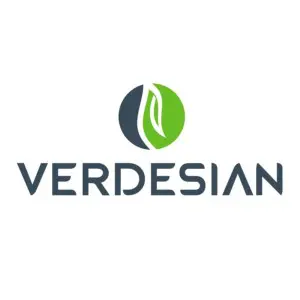With nitrogen prices increasing over the past few years, growers have their minds squarely on fertilizer costs. But perhaps a better consideration for growers is how to maximize the efficiency of the nitrogen they do put down. And in times of rapid growth, it isn’t enough for nitrogen to just be applied. Nitrogen and other essential nutrients also must be available to the plant and optimized after uptake.
No matter the nitrogen price, Take Off® LS can help ensure growers maximize their fertilizer investment by improving nitrogen efficiency by 3-5 percent. As a biostimulant, it does just what it sounds like – it stimulates plant growth through rapid cell reproduction and promotes take-off right from the start.
“Take Off LS is a biostimulant signaling compound that works within the plant that helps accelerate the glutamate cycle, which takes nitrogen from the soil and carbon from the air to create photosynthetic energy,” says Mike Zwingman, Verdesian Life Sciences Director of Agronomy, Row Crops. “It assimilates nitrogen into compounds like ammonium, and through that process, we get amino acids, carbohydrates, lipids, and others that rapidly enhance plant growth.”
The Specifics
From 2017 to 2022, when Take Off LS was used on corn as a foliar application, growers saw approximately a 5.5-bushel increase over the untreated check. In soybeans, growers saw a 3.5-to-4-bushel difference. Plants grow bigger earlier, which allows more surface area to absorb sunlight. Because the plants also use nutrients more efficiently, growers have stronger, healthier plants, creating a healthier ROI at about $7/A cost to the grower. (Prices may vary, speak to your retailer for current pricing.)
“When you look at the Take Off LS results across time, conditions, and multiple Corn Belt states, that’s six years of data that show positive results from Take Off LS,” Zwingman says. “An 85 percent win rate is a solid performance for a product within the biostimulant category.”
Used during fertilizer, fungicide, insecticide, or especially the herbicide application in corn and soybeans, Take Off LS can find its greatest fit in helping the plant meet its needs during rapid growth periods and set it up for future success.
“We’ve seen canopy closure two to three days sooner after a Take Off LS application,” Zwingman says. “And when we talk about the value added from a long-term weed control perspective, two- or three-days advanced canopy closure is invaluable to managing those tougher-to-control weeds.”
Bottom Line
The flexibility of Take Off LS makes it easy for growers to implement it on their farms. It can be applied in-furrow or early and late-post applications during the growing season and used alone or in a tank mix with other fertilizers or crop protection products (including dicamba and 2,4-D herbicide systems). After application, there’s a unique visual response; the difference in plant growth and architecture is significant within five to seven days. ROI is also substantial—the average return post herbicide timing is 6.5 times gross ROI.
“Think of the mode of action as if it’s a dimmer switch,” Zwingman says. “That signaling compound that we’re mimicking, the more that’s there, the faster the machine runs, or the brighter the light. We can stack the deck in the plant’s favor and change the trajectory of the entire life cycle of that plant in a moment. And that’s the difference between great and average nitrogen efficiency: give the plant the greatest opportunity to capitalize on what it’s been given.”
To learn more about Take Off LS and to get in touch with an expert, visit: https://vlsci.com/products/take-off-ls/ or contact your local agronomy retailer.


